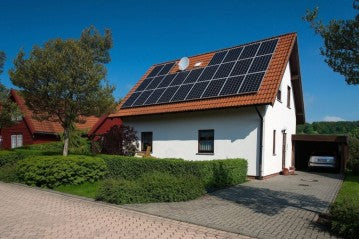
In the ever-evolving world of renewable energy, solar panels have become a vital player in the pursuit of sustainable power solutions. Among the various types of solar panels available in the market, one technology that stands out for its efficiency and innovation is the "half-cut cell mono solar panel." If you're considering investing in solar energy products, understanding what half-cut cell mono solar panels are and how they work can empower you to make an informed decision. In this blog post, we will explore the ins and outs of these cutting-edge solar panels and the advantages they offer to eco-conscious consumers.
The Evolution of Solar Panels
Harnessing the Power of the Sun
Solar panels, also known as photovoltaic (PV) panels, have revolutionized the energy landscape by converting sunlight into electricity. Traditional solar panels comprise a series of interconnected cells, where the current flows through the entire length of each cell. However, as technology advanced, so did the efficiency of solar panels. The quest for higher efficiency led to the development of half-cut cell mono solar panels.
Understanding Half-Cut Cell Mono Solar Panels
Breaking Down the Technology
Half-cut cell mono solar panels are a significant advancement in photovoltaic technology. These panels are based on monocrystalline solar cells, which are known for their high efficiency due to their uniform color and structure. The key differentiator of half-cut cell panels lies in their cell design.
Cell Division
In a standard solar panel, cells are full-sized and connected in a series. Half-cut cell panels, as the name suggests, divide these full-sized cells into half, effectively halving the current passing through each cell. This division reduces resistive losses and allows the panel to perform better in challenging conditions, such as shading and soiling.
Benefits of Half-Cut Cells
1. Enhanced Efficiency: The division of cells reduces electrical resistance, leading to improved efficiency. With half-cut cell mono solar panels, you can generate more electricity from the same amount of sunlight, maximizing your investment.
2. Lower Heat Generation: Half-cut cells dissipate less heat during operation, resulting in a cooler panel and less thermal degradation over time. Cooler panels tend to have a longer lifespan and maintain higher performance levels.
3. Tolerant to Shading: One of the major drawbacks of traditional solar panels is their susceptibility to output loss due to shading. Half-cut cell panels mitigate this issue by reducing the number of cells affected by shading. Even if a part of the panel is shaded, the other half continues to produce electricity efficiently.
4. Improved Durability: By minimizing electrical losses, half-cut cell panels put less stress on the components, increasing the overall durability and reliability of the solar panel system.
Advantages for Homeowners and Businesses
Empowering Your Solar Investment
1. Higher Energy Yields
Due to their enhanced efficiency, half-cut cell mono solar panels can produce more electricity compared to traditional panels of the same wattage. This means homeowners and businesses can generate more clean energy, potentially reducing or eliminating their reliance on the grid.
2. Space-Efficient
With the increased energy yield, half-cut cell panels offer the advantage of requiring less installation space for the same power output. This makes them an ideal choice for properties with limited roof space or where aesthetics play a crucial role.
3. Long-Term Savings
Investing in half-cut cell mono solar panels may seem slightly costlier upfront, but the long-term savings they offer can outweigh the initial investment. Higher efficiency and better durability mean reduced maintenance costs and more savings on energy bills over the system's lifespan.
4. Environmental Impact
By embracing solar energy with half-cut cell panels, customers can contribute to a greener future by significantly reducing their carbon footprint. Solar panels harness the sun's energy without emitting harmful greenhouse gases, making them a clean and sustainable energy solution.
Conclusion
Solar panels have undoubtedly changed the way we perceive and utilize energy. Among the diverse range of solar panel technologies, half-cut cell mono solar panels stand out as a powerful advancement, offering higher efficiency, better performance in challenging conditions, and long-term cost savings. As a customer interested in solar energy products, investing in half-cut cell mono solar panels can be a prudent choice, not only for your pocket but also for the planet.
Embracing solar energy with this innovative technology not only helps you make a positive impact on the environment but also ensures that you are making the most out of the sun's abundant energy. So, whether you're a homeowner looking to reduce your carbon footprint or a business owner aiming for long-term energy cost savings, half-cut cell mono solar panels can be your key to a brighter and more sustainable future.


0 Kommentare